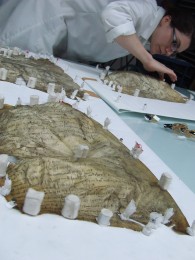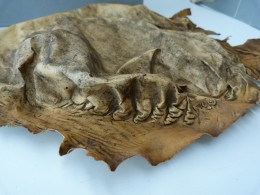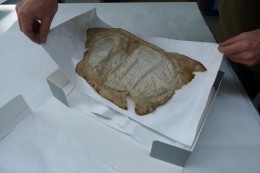Great Parchment Book retrospective: conservation
Next » « PreviousNow with the successful outcome of the Great Parchment Book project well-established and in the public eye once again, it seems a good time to reflect back on the different elements which made up the project and try to make sense of the journey.
We start with conservation, the essential first phase of the project prior to the digital imaging, for which funding was obtained from the National Manuscripts Conservation Trust. The six month project ran from April to September 2012. Conservator Rachael Smither, was appointed to carry out the work, supervised by Dr Caroline De Stefani the London Metropolitan Archives Conservation Studio Manager.
The conservation treatment of such a degraded and fragile manuscript was challenging and a considerable amount of research and a number of treatment trials had to happen before any work on the folios of the Great Parchment Book could take place.
One trial which really caught the imagination was when Rachael took a replica parchment book home to cook in the oven to see what the effect would be (it was very smelly!) She also discovered that an earlier attempt had been made to flatten some of the folios which had led to some perfectly flat sheets, but increased instability of the original material.
It was decided therefore that only minimal treatment would be undertaken to make the digital imaging possible where folds and creases were obscuring the text. Instead of flattening, the folds and creases were gently pushed out with the result that the so-called poppadum book retained its familiar physical characteristics. A bespoke packaging solution was devised to support and protect the folios in the future.
The conservation of the Great Parchment Book was recognised in 2015 when the project was short-listed for the Pilgrim Trust Award for Conservation.
You can explore the conservation of the Great Parchment Book on the blog in detail (go to the end of the page once you’ve clicked the link to read in chronological order).
You can also see the conservation treatment in action on the Great Parchment Book project video.

